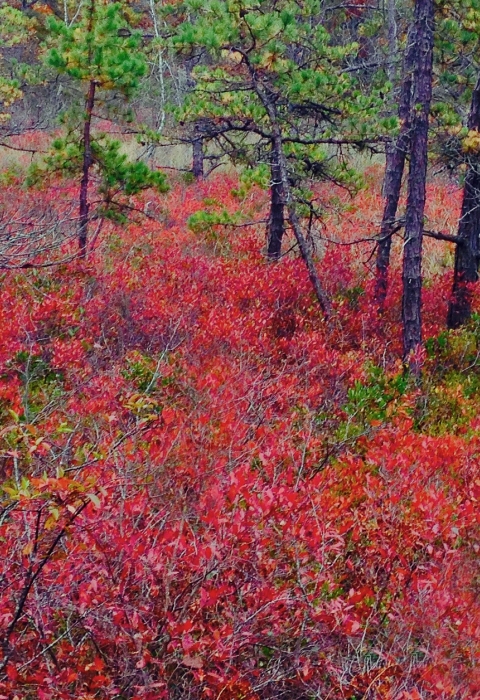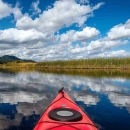Visit Us
Coastal Maine is a destination for both national and international visitors. Visitors are drawn to the area's beaches, rocky coastline, and forests every year. Rachel Carson National Wildlife Refuge offers an alternative for those seeking solitude and a connection with nature.
While our main purpose is to protect wildlife and natural resources, the refuge offers a variety of ways for the public to experience and appreciate its protected public lands including three main nature trails and many wildlife observation stations featuring every habitat type found on the refuge, hunting and fishing opportunities, interpretive and educational programs, a visitor information center, many volunteering opportunities, as well as other recreational activities.
For information on trails, wildlife viewing and photography, and other recreational opportunities at the refuge, click on the button below.
Location and Contact Information
What We Do
Land Acquisition
Across the country, the U.S. Fish and Wildlife Service is interested in continuing the work of protecting natural and working lands, restoring habitat on open land and salt marshes and acquiring properties from willing sellers that lie in close proximity to existing refuge lands. Here in southern Maine, the refuge is currently purchasing lands and conservation easements from willing sellers. A conservation easement conservation easement
A conservation easement is a voluntary legal agreement between a landowner and a government agency or qualified conservation organization that restricts the type and amount of development that may take place on a property in the future. Conservation easements aim to protect habitat for birds, fish and other wildlife by limiting residential, industrial or commercial development. Contracts may prohibit alteration of the natural topography, conversion of native grassland to cropland, drainage of wetland and establishment of game farms. Easement land remains in private ownership.
Learn more about conservation easement is a transaction where the owner retains the land as their private property but conveys certain rights that protect the property’s wildlife habitat in perpetuity. We also gratefully accept land donations when they contribute to refuge purposes.
If you would like to talk about the benefits of protecting your land and integrating it into the National Wildlife Refuge System, please reach out to me by phone or e-mail using my contact information below. I have attached links describing the work of the Rachel Carson NWR and our Realty Division for your review on the second page of this letter. I hope to hear from you soon!
Karl Stromayer, Refuge Manager
Phone: 207-206-6735
Email: Karl_Stromayer@fws.gov
Our Organization
Our Species
Southern coastal Maine contains a greater diversity of upland plant and animal species than any other part of the state. Yet, this biologically rich area is the most densely populated part of Maine, and continues to experience rapid growth. The refuge divisions, distributed along 50 miles of Maine's southern coast, lie in the heart of that region. Along with salt marshes the refuge supports other coastal habitats including dune grassland, beach, subtidal and intertidal mudflats, marine open water, tidal river, maritime shrubland, and upland forest. Those habitats provide critical buffers for the salt marsh salt marsh
Salt marshes are found in tidal areas near the coast, where freshwater mixes with saltwater.
Learn more about salt marsh and habitat for many aquatic and upland species of conservation concern.
Get Involved
There are so many ways to get involved at Rachel Carson National Wildlife Refuge. Some activities may involve tasks such as winter rabbit tracking, habitat restoration, plant propagation, and invasive plant removal. Share your knowledge of the natural world by performing surveys or lend a hand at our visitor center by helping orient visitors to the area. We also host several volunteer days throughout the year that will appeal to anyone who would like to get their hands dirty. This is a great opportunity to learn about the refuge, what we do to protect wildlife and their habitat, gain experience, meet new people, and have fun!
Please call (207) 535-9145, to sign up for the volunteer email list and learn more about the refuge.
Projects and Research
Refuge staff conserves, creates, and restores habitats to benefit a diversity of wildlife. We focus on the highest priority lands; salt marshes, tidal rivers, forests, beaches, and thickets. These areas are home to many animals, both common and rare. Of course we don’t do it alone, we work closely with our conservation partners and communities.





